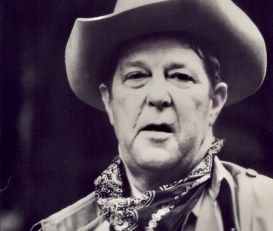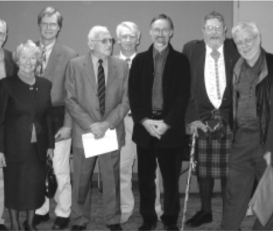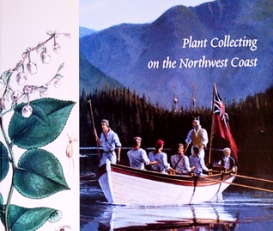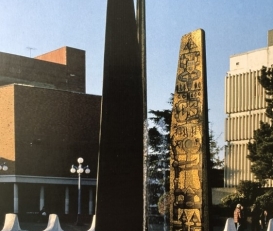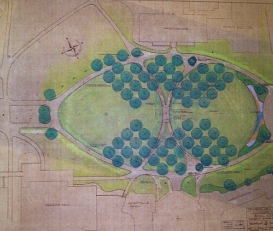
Clive Lionel Justice, who was born at Ganges, Salt Spring Island, grew up fascinated by the plant life of British Columbia. At 17, he was serving with the Canadian Forces in Europe where, visiting relatives, he fell under the spell of the English beech, oak and rhododendron landscapes that would influence his life’s work. In 1947, Justice used his WWII veteran's allowance to study landscape architecture at the University of California, Berkeley. He was the first Canadian to graduate from the program (1950).
Justice became assistant landscape architect under Otis Bishopric (Department of Public Works, Ottawa), where he worked on embassies, post offices, and more, including the Prime Minister’s residence, but he returned to the west to study planning at UBC. Graduating in 1953, he joined Desmond Muirhead – “an absolute genius on plants,” he said – in the first Vancouver-based firm to specialize in landscape architecture, soon renamed Muirhead and Justice Landscape Architects (later, Justice, Webb and Vincent Landscape Architects).
Justice blazed a trail as one of BC’s first registered landscape architects, working first on planning and zoning (Richmond, B.C.), then on projects ranging from golf courses to landscape restoration, from dude ranches to botanical gardens in Malaysia and India, to dozens of local parks. Landmark projects include Vancouver’s Park & Tilford Gardens, the UBC Botanical Garden and Victoria’s Centennial Square. In Saskatoon, over some two decades, the firm shaped the University of Saskatchewan’s much-admired English campus landscapes.
Justice was dedicated to building the profession in the west, regularly mentoring interns and employees. He was a founding member of the BCSLA (1964), and integrally involved in setting standards of practice for the province. He served as President of the BCSLA (1970,71,72), then the CSLA (1972-74), where he set out to unite the provincial associations as components of the CSLA, and to nominate BC practitioners as Fellows.
Justice was a prolific builder and designer and a gifted communicator with an appetite for knowledge. In retirement, he studied garden history at Simon Fraser University, and his well-received book, Mr. Menzies’ Garden Legacy (2002), was in part responsible for his sartorial flair: he often sported Scottish regalia to bring Archibald Menzies to mind. He earned a doctorate in 2002 at the age of 76.
Justice was a founding member of the Vancouver Rhododendron Society, an American Rhododendron Society Gold Medal recipient, and a volunteer abroad, working with park planners in developing countries. Trees were one of his many passions, and he was active in protecting local parks and Vancouver's heritage trees. (His bumper sticker, recalls his son Charles, read, “Trees are the Answer”.) He is remembered especially for his service to the community and the indomitable force of his personality.
Photos
- Clive Justice in his signature Stetson. Photo Justice Family.
- 2002: the traditional annual meeting of the BCSLA Board with a contingent of B.C. Fellows. Photo Adrienne Brown.
- Mr. Menzies’ Garden Legacy, by Clive Lionel Justice. Cavendish Books Inc., 2000.
- Centennial Square, Victoria, one of the city’s first urban restoration projects. Photo by Ron Williams. As a boy in the 30s, Justice had helped his father tend a farm stall on the site.
- University of Saskatchewan: the oval green space known as the Bowl at the heart of the campus. Over a 20-year relationship with the university, the firm preserved and enhanced some of the formal framework from Thomas Mawson’s grand master plan, created in 1912.
- Canada West Landscape Architecture, by Clive Justice, published 2017.
